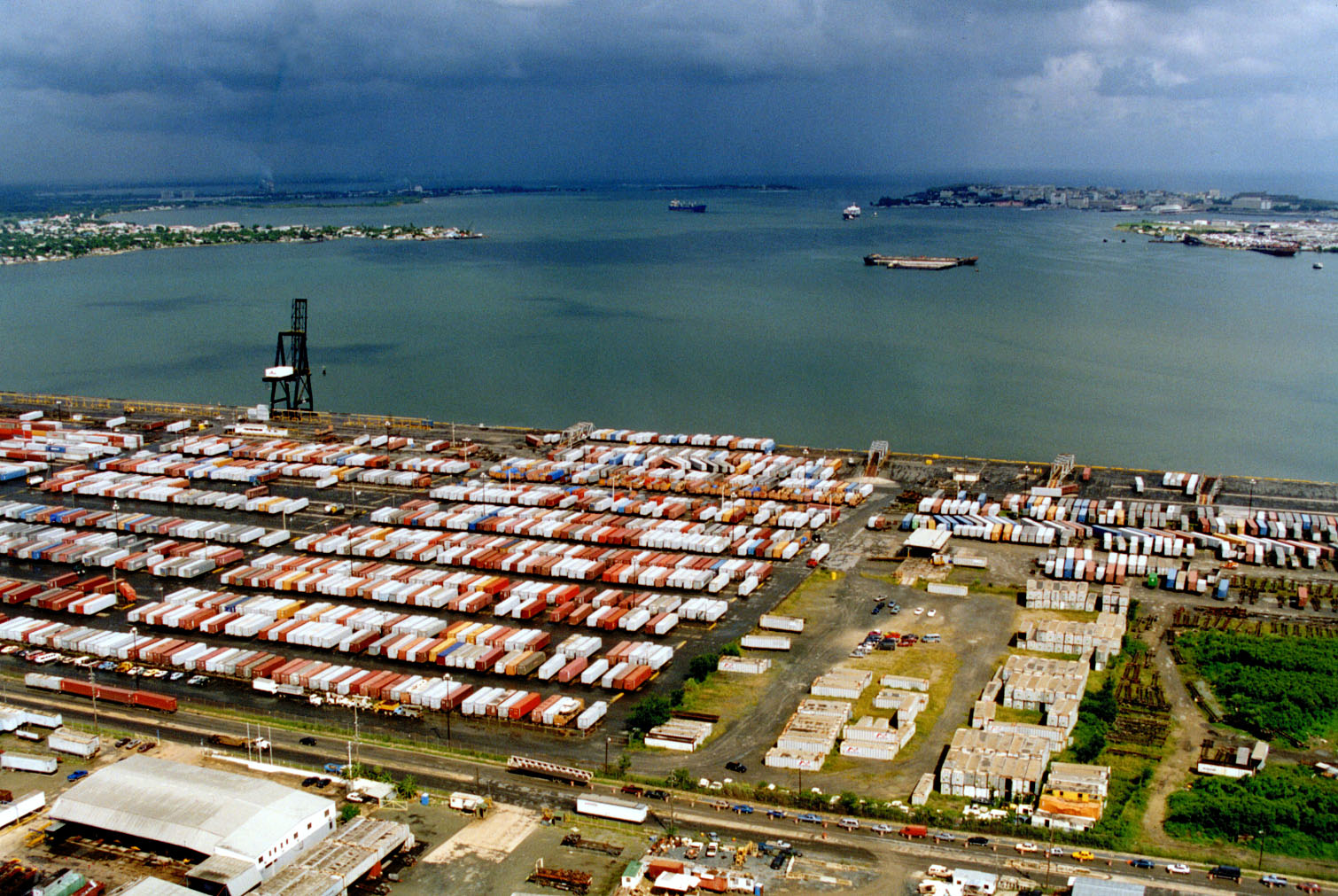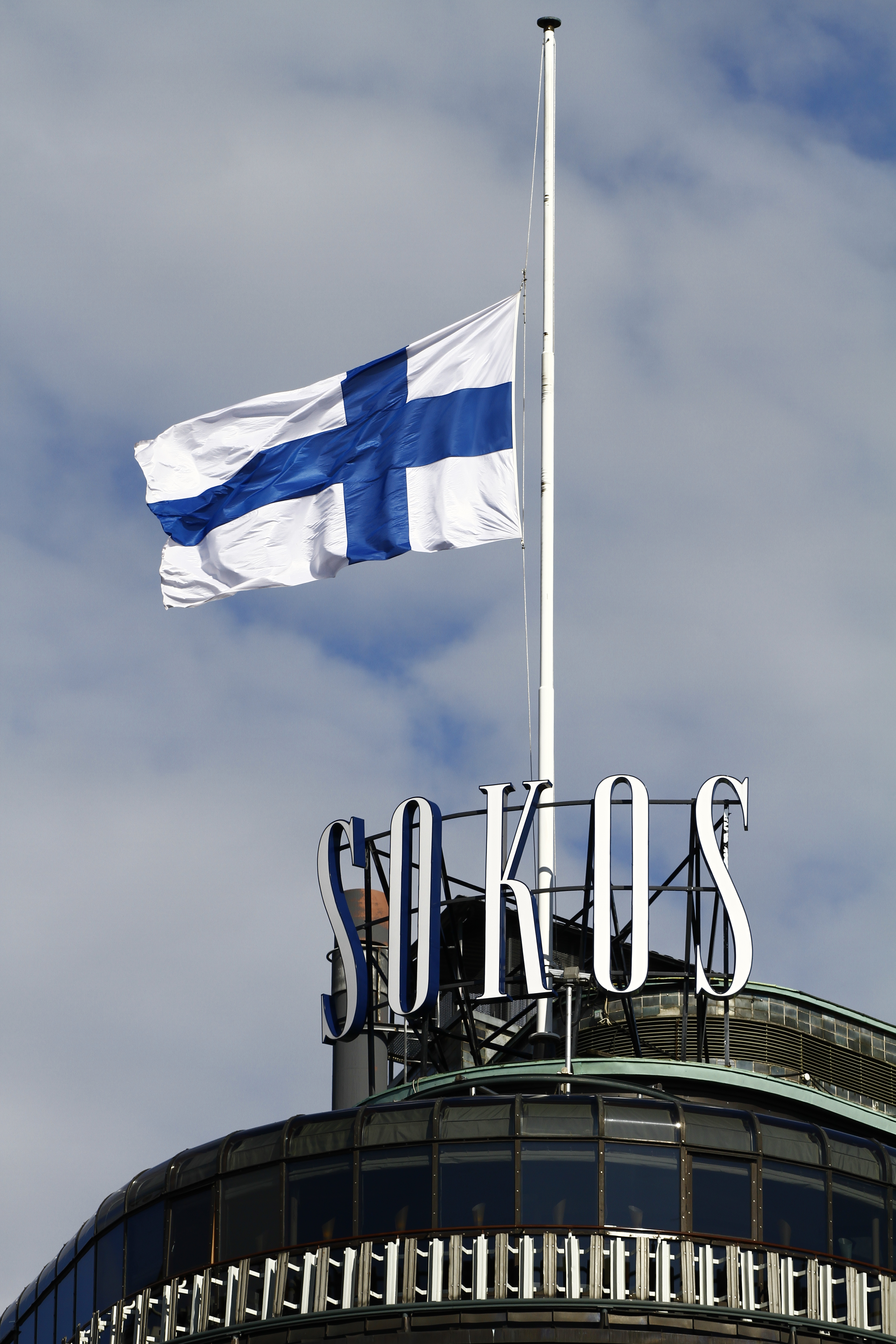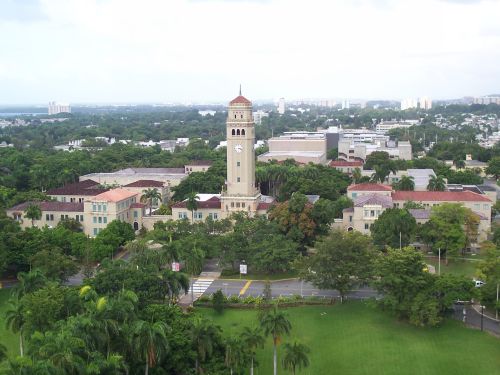|
Organizacion De Narcotraficantes Unidos
The Organizacion de Narcotraficantes Unidos (ONU, or La ONU) (in English: United Drug Traffickers), is a Puerto Rican criminal organization based in Bayamón, Puerto Rico. It is an organization dedicated to drug dealing and unifying various well-known dealers under one umbrella group. Established in 1995, by 2009, when 37 members of the organization were arrested, it had become the most powerful drug trafficking organizations in Puerto Rico. US$100 million was forfeited during the siege by the Bayamón Task Force and other authorities. It began with the purposes of unifying criminal elements but often ended in turf wars and revenge killings. History Copying the way the United Nations is named which is in Spanish, and commonly abbreviated to "ONU", the group calls itself (ONU) and (in English: United Narcotraffickers Organization). The criminal organization was originally formed by José "Coquito" López Rosario, also known as "Coco Blin Blin" (a reference to his Blin Blin mus ... [...More Info...] [...Related Items...] OR: [Wikipedia] [Google] [Baidu] |
Bayamón, Puerto Rico
Bayamón (, ) is a Bayamón barrio-pueblo, city, Municipalities of Puerto Rico, municipality of Puerto Rico and suburb of San Juan, Puerto Rico, San Juan located in the northern coastal valley, north of Aguas Buenas, Puerto Rico, Aguas Buenas and Comerío, Puerto Rico, Comerío; south of Toa Baja, Puerto Rico, Toa Baja and Cataño, Puerto Rico, Cataño; west of Guaynabo, Puerto Rico, Guaynabo; and east of Toa Alta, Puerto Rico, Toa Alta and Naranjito, Puerto Rico, Naranjito. Bayamón is spread over 11 Ward (country subdivision), barrios and Bayamón barrio-pueblo, Bayamón Pueblo (the downtown area and the administrative center of the city). It is part of the San Juan-Caguas-Guaynabo Metropolitan Statistical Area and the second most populous municipality in both the metropolitan area and Puerto Rico. History The Taíno people, the indigenous peoples who encountered European explorers and settlers, were the long-time settlers in this area. The Spanish colonization of the America ... [...More Info...] [...Related Items...] OR: [Wikipedia] [Google] [Baidu] |
Toa Baja, Puerto Rico
Toa Baja (, ) is a town and municipality of Puerto Rico located in the northern coast, north of Toa Alta and Bayamón; east of Dorado; and west of Cataño. Toa Baja is spread over five barrios, including Toa Baja Pueblo (the downtown area and the administrative center of the city). Toa Baja is part of the San Juan-Caguas-Guaynabo Metropolitan Statistical Area. Toa Baja is located fifteen minutes by car from San Juan and two hours from Ponce. History The region of what is now Toa Baja belonged to the Taíno region of Toa and Bayamón, which was located on the north coast of Puerto Rico. The regions were led by cacique Aramana and Majagua respectively. During the Spanish colonization, a farm was settled in the region around 1511 where Spanish settlers tried to learn from the Taínos how to grow fruits and vegetables. Some of the families who settled in the region were Marrero, Salgado, and Martínez, from the Canary Islands. In 1745, the town was officially organized, with ... [...More Info...] [...Related Items...] OR: [Wikipedia] [Google] [Baidu] |
Hispanic-American Gangs
Gangs in the United States include several types of groups, including national street gangs, local street gangs, prison gangs, motorcycle clubs, and ethnic and organized crime gangs.. Approximately 1.4 million people were part of gangs as of 2011, and more than 33,000 gangs were active in the United States.. Many American gangs began, and still exist, in urban areas. In many cases, national street gangs originated in major cities such as New York City and Chicago but they later grew in other American cities like Albuquerque and Washington, D.C. History The earliest American street gangs emerged at the end of the American Revolutionary War in the early 1780s.. However, these early street gangs had questionable legitimacy, and more serious gangs did not form until at least the early 1800s. The earliest of these serious gangs formed in northeastern American cities, particularly in New York.. Early street gangs in the Northeast: 1780–1870 Three main immigrant groups enter ... [...More Info...] [...Related Items...] OR: [Wikipedia] [Google] [Baidu] |
Illegal Drugs In Puerto Rico
The Illegal drug trade in Puerto Rico is a problem from a criminal, social, and medical perspective. Located in the Caribbean, Puerto Rico has become a major transshipment point for drugs into the United States. Violent and property crimes have increased due in part to dealers trying to keep their drug business afloat, using guns and violence to protect themselves, their turfs, and drug habits.Montalvo-Barbot, Alfredo. "Crime in Puerto Rico: drug trafficking, money laundering, and the poor." Crime and Delinquency 43.4 (1997): 533–548. print. Crimes related to drugs are not the only crimes plaguing the island. Along with gang violence the island has also been victim to Police and political corruption. Chronology 1970–2008 The Government of Puerto Rico has struggled to combat illegal drug use and the resulting crime since the mid-1970s. Their efforts have been referred to as a "War on Drugs". Though drug use was uncommon in Puerto Rico in the 1950s, it markedly increased ... [...More Info...] [...Related Items...] OR: [Wikipedia] [Google] [Baidu] |
Latin Trap
Latin trap is a subgenre of Trap music, trap music that originated in Puerto Rico. A direct descendant of southern hip hop, and influenced by reggaeton, it gained popularity after 2007, and has since spread throughout Latin America. ''The trap'' is slang for a place where drugs are sold. Latin trap is similar to mainstream trap with lyrics about life on ''la calle'' (the street), drugs, sex and violence, without censorship. Characteristics Latin trap is a subgenre of Latin hip hop, taking influence from Southern hip hop as well as Puerto Rican genres like reggaeton and dembow. Vocals include a bend of rapping and singing using synthesizers and voice distorted autotune, often in Spanish, while still maintaining the trap style sonic circuitry. The lyrics in Latin trap are often about street life, violence, sex, drugs, and people who live on the other side of the law and are proud of it. History 2000s Latin trap originated in Puerto Rico and gained popularity throughout Lati ... [...More Info...] [...Related Items...] OR: [Wikipedia] [Google] [Baidu] |
Bureau Of Alcohol, Tobacco, Firearms And Explosives
The Bureau of Alcohol, Tobacco, Firearms and Explosives (BATFE), commonly referred to as the ATF, is a domestic law enforcement agency within the United States Department of Justice. Its responsibilities include the investigation and prevention of federal offenses involving the unlawful use, manufacture, and possession of firearms and explosives; acts of arson and bombings; and illegal trafficking and tax evasion of alcohol and tobacco products. The ATF also regulates via licensing the sale, possession, and transportation of firearms, ammunition, and explosives in interstate commerce. Many of the ATF's activities are carried out in conjunction with task forces made up of state and local law enforcement officers, such as Project Safe Neighborhoods. The ATF operates a unique fire research laboratory in Beltsville, Maryland, where full-scale mock-ups of criminal arson can be reconstructed. The ATF had 5,285 employees and an annual budget of almost $1.5 billion in 2021. The ATF ... [...More Info...] [...Related Items...] OR: [Wikipedia] [Google] [Baidu] |
National Day Of Mourning
A national day of mourning is a day or days marked by mourning and memorial activities observed among the majority of a country's populace. They are designated by the national government. Such days include those marking the death or funeral of a renowned individual or individuals from that country or elsewhere or the anniversary of such a death or deaths, the anniversaries of a significant natural or man-made disaster occurring either in the country or another country, wartime commemorations or in memory of the victims of a terrorist attack. Flying a national or military flag of that country at half-mast is a common symbol. List The following are lists for national days of mourning across the world: * Before 2000 * 2000–2019 * 2020–present Selected list of figures recognized State officials * A National Day of Mourning is typically declared for Presidents of the United States, usually on the day of their funerals. Beginning with John F. Kennedy, these days are also ... [...More Info...] [...Related Items...] OR: [Wikipedia] [Google] [Baidu] |
Luis Fortuño
Luis Guillermo Fortuño Burset (born 31 October 1960) is a Puerto Rican politician who served as the governor of Puerto Rico, an unincorporated territory of the United States, from 2009 to 2013. Fortuño served as the first secretary of economic development and commerce of Puerto Rico (1994–1997), as the executive director of the Puerto Rico Tourism Company (1993–1994), and as the president of the Puerto Rico Hotel Development Corporation during the administration of Pedro Rosselló. In 2004, Fortuño was elected resident commissioner of Puerto Rico, defeating Senator Roberto Prats. As resident commissioner, Fortuño represented Puerto Rico in the United States House of Representatives from 2005 to 2009; during his tenure, he served as Chair of the Congressional Hispanic Conference, as a Member of the newly created United States House Natural Resources Subcommittee on Insular Affairs and as co-chair of the Friends of Spain Caucus. Fortuño won the 2008 PNP gubernatorial nom ... [...More Info...] [...Related Items...] OR: [Wikipedia] [Google] [Baidu] |
Carolina, Puerto Rico
Carolina (; ) is a city and municipality located on the northeast coast of Puerto Rico. It lies immediately east of the capital San Juan and Trujillo Alto; north of Gurabo and Juncos; and west of Canóvanas and Loíza. Carolina is spread over 12 barrios plus Carolina Pueblo (the downtown area and administrative center). It is part of the San Juan-Caguas-Guaynabo Metropolitan Statistical Area, and home to Puerto Rico's main airport, the Luis Muñoz Marín International Airport. History The town was founded by Spanish colonists in 1816 as Trujillo Bajo ("lower Trujillo"), along with its counterpart Trujillo Alto after Trujillo, Spain. In 1857 it was renamed to San Fernando de la Carolina, later shortened to ''Carolina'', after Charles II of Spain. The city is known as ''"Tierra de Gigantes"'' (Land of Giants), not only for well-known Carolina resident Don Felipe Birriel González (who was 7'11"), but also in honor of other people from Carolina, including poet Julia de Burg ... [...More Info...] [...Related Items...] OR: [Wikipedia] [Google] [Baidu] |
Río Piedras, Puerto Rico
Río Piedras is a populous district of San Juan, and former town and municipality of Puerto Rico, which was merged with the municipality of San Juan in 1951. The district today is composed of various '' barrios'' (these are the primary legal divisions of municipalities in Puerto Rico) such as Pueblo and Universidad. The historic town was founded in 1714 as El Roble, it was given municipality rights in 1823, and since 1903 it has been the home of the University of Puerto Rico's main campus, earning the popular name of ''Ciudad Universitaria'' (similar to college town) today. The downtown and historic center of Río Piedras is officially known as the Pueblo barrio of the municipality of San Juan. Name In addition to being the name of the barrio and district, Río Piedras ( Piedras River) is also the name of a river that crosses the district. Río Piedras was also the name of the former municipality of Puerto Rico (1823-1950). History The area where Río Piedras is lo ... [...More Info...] [...Related Items...] OR: [Wikipedia] [Google] [Baidu] |
Toa Alta, Puerto Rico
Toa Alta () is a Toa Alta barrio-pueblo, town and Municipalities of Puerto Rico, municipality of Puerto Rico located in the northern coast of the island, north of Naranjito, Puerto Rico, Naranjito; south of Dorado, Puerto Rico, Dorado and Toa Baja, Puerto Rico, Toa Baja; east of Vega Alta, Puerto Rico, Vega Alta and Corozal, Puerto Rico, Corozal; and west of Bayamón, Puerto Rico, Bayamón. Toa Alta is spread over eight barrios and Toa Alta barrio-pueblo, Toa Alta Pueblo (the downtown area and the administrative center of the city). It is part of the San Juan–Caguas–Guaynabo metropolitan area, San Juan-Caguas-Guaynabo metropolitan statistical area. There are nine barrios in Toa Alta and altogether in 2020 had a population of 66,852. Río de la Plata, is a large river that runs through Toa Alta. Toa Alta celebrates its patron saint festival in May. History Toa Alta is located west of the capital city of San Juan, Puerto Rico, San Juan and was founded in 1751, making it one of t ... [...More Info...] [...Related Items...] OR: [Wikipedia] [Google] [Baidu] |
San Juan, Puerto Rico
San Juan (, , ; Spanish for "Saint John") is the capital city and most populous municipality in the Commonwealth of Puerto Rico, an unincorporated territory of the United States. As of the 2020 census, it is the 57th-largest city under the jurisdiction of the United States, with a population of 342,259. San Juan was founded by Spanish colonists in 1521, who called it Ciudad de Puerto Rico ("City of Puerto Rico", Spanish for ''rich port city''). Puerto Rico's capital is the third oldest European-established capital city in the Americas, after Santo Domingo, in the Dominican Republic, founded in 1496, and Panama City, in Panama, founded in 1521, and is the oldest European-established city under United States sovereignty. Several historical buildings are located in San Juan; among the most notable are the city's former defensive forts, Fort San Felipe del Morro and Fort San Cristóbal, and La Fortaleza, the oldest executive mansion in continuous use in the Americas. Today, Sa ... [...More Info...] [...Related Items...] OR: [Wikipedia] [Google] [Baidu] |






